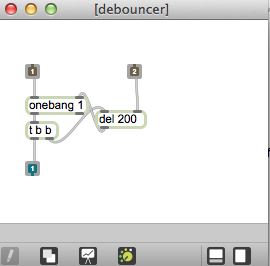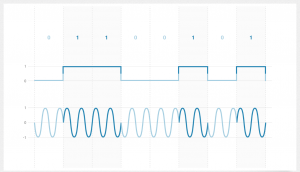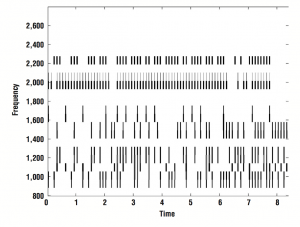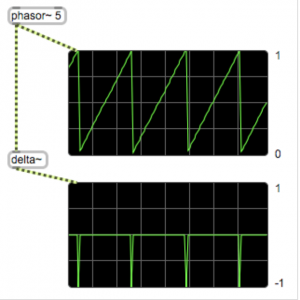By Eric Lyon
Have been relocated to:
https://github.com/ericlyon/LyonPotpourri-MaxMSP
Object Listing: - adsr~ a simple ADSR envelope that can be click triggered - arrayfilt~ fft-based filtering by drawing into an array - bashfest~ a click driven buffer player with randomized DSP - buffet~ provides operations on a stored buffer - bvplay~ selective playback from a stored buffer with enveloping and increment control - cartopol~ convert a spectral frame from cartesian to polar form - channel~ access to a precise address in the signal vector - chopper~ munging loop playback from a buffer - clean_selector~ like selector~ but crossfades when switching channels - click~ converts a bang to a click - click2float~ translates a signal click to a float message - clickhold~ sample and hold a click - convolver~ non-real-time convolution with impulses of arbitrary size - distortion~ lookup function distortion - dmach~ pattern based sample accurate drum machine prototype - expflam~ converts a click to an exponential flam click pattern - flanjah~ simple flanger - function~ write various functions into an array - granola~ granular pitch scaling - granulesf~ granular synthesis module reading from a soundfile in a buffer - granule~ granular synthesis module reading from a stored waveform in a buffer - greater~ compares two signals on a per-sample basis - kbuffer~ low sampling rate buffer to capture gestures - killdc~ DC block filter - latch~ sustain an incoming click with sample-accurate timing - magfreq_analysis~ transforms a time domain signal to a magnitude/frequency spectrum - markov~ implements a first order Markov chain - mask~ a click driven pattern sequencer - npan~ power-panning to an arbitrary number of output channels - oscil~ oscillator with flexible waveform specification - phasemod~ phase modulated waveform - player~ click driven buffer player that can sustain multiple iterations - poltocar~ convert spectral frame from polar to complex representation - pulser~ pulse wave generated by additive synthesis - quadpan~ pan an incoming sound within a quadraphonic plane - rotapan~ rotate an array of input channels to the same number of output channels - rtrig~ generates random click triggers - samm~ sample accurate multiple metronomes, with click signal articulation - sarec~ sample accurate recording - sel~ sample-accurate implementation of the sel algorithm - shoehorn~ collapse from a larger number to a smaller number of audio channels - sigseq~ signal level numerical sequencer - splitbank~ - split an incoming sound into complementary, independently tunable spectra - splitspec~ split an incoming sound into complementary spectra - squash~ implementation of a compression algorithm by Chris Penrose - stutter~ stuttering playback from an array - vdb~ a delay line using an array for storage (no vector limit on feedback delaytime) - vdp~ a simple, self-contained delay unit - vecdex~ outputs the sample index within the current signal vector - waveshape~ a Chebychev function lookup waveshaper - windowvec~ apply a Hann window to the input signal vector







